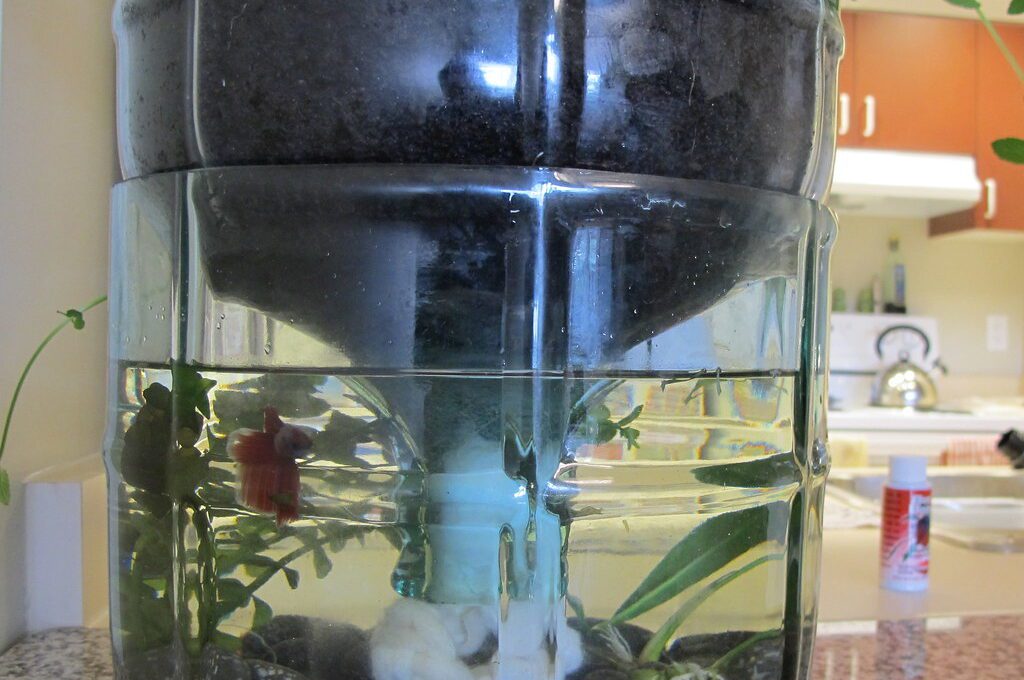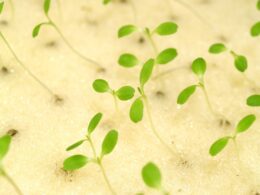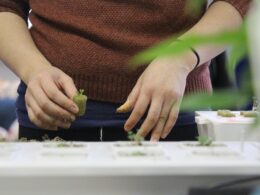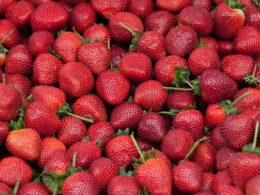Are you looking to start an indoor hydroponic garden? Hydroponics is a soil-free method of growing plants that uses nutrient-rich water solutions to foster plant growth. This method of gardening has become increasingly popular due to its efficiency and ability to grow plants year-round, regardless of the outdoor climate.
But with so many plant options available, it can be overwhelming to know what will grow best in an indoor hydroponic system.
In this article, we will explore the basics of hydroponics and provide you with tips for successful indoor hydroponic gardening. We will also discuss the factors to consider when choosing plants for your indoor garden and offer suggestions for the best plants to grow in a hydroponic system.
With our guidance, you can create a thriving and fruitful indoor hydroponic garden that will provide you with fresh produce all year long.
Understanding the Basics of Hydroponics
You’ll be amazed at how easy it is to create a thriving garden without soil, as you learn the basics of hydroponics. Hydroponic systems are designed to grow plants using water, instead of soil. This type of gardening is perfect for those who want to grow plants indoors, or those who live in areas with poor soil quality.
To get started with hydroponics, you’ll need to have the right equipment. This includes a hydroponic system, which can be purchased at any garden store. You’ll also need nutrient solutions, which are a mixture of water and essential plant nutrients. These solutions provide everything that your plants need to grow and thrive, without the need for soil.
With hydroponics, you can grow a variety of plants, including herbs, vegetables, and even fruit. The key is to make sure that you provide your plants with the right amount of light, water, and nutrients.
As you become more experienced with hydroponics, you can experiment with different types of plants and nutrient solutions. With a little bit of patience and practice, you can create a thriving indoor garden that will provide you with fresh, healthy produce all year round.
Factors to Consider When Choosing Plants
When you’re choosing plants for your indoor setup, it’s important to consider factors like space, lighting, and maintenance so you can create a thriving and beautiful oasis in your home.
The first factor to consider is the lighting requirements of the plants you choose. Some plants require a lot of light, while others prefer lower levels. Make sure you choose plants that will receive the right amount of light for your setup.
Another factor to consider is the pH levels of your hydroponic system. Different plants have different pH requirements, so it’s essential to choose plants that will thrive in the pH range of your system. Be sure to test your water regularly to ensure that the pH is at the correct level for your plants.
Lastly, when choosing the right hydroponic system for your plants, consider the amount of maintenance required. Some systems require more maintenance than others, and some are better suited for certain types of plants. Do your research and choose a hydroponic system that will work best for your chosen plants and your lifestyle.
With the right combination of lighting, pH levels, and hydroponic system, you can create a beautiful and thriving indoor garden.
Best Plants for Indoor Hydroponics
When it comes to choosing the best plants for your indoor hydroponics system, you’ll want to focus on leafy greens, herbs, fruits, and vegetables. These plants are ideal for hydroponics because they require less space, are easy to grow, and produce high yields.
So, whether you’re a beginner or an experienced hydroponics grower, these plants are a great place to start.
Leafy Greens
Leafy greens are a great option for your indoor hydroponic setup. They’re easy to maintain and thrive under the right conditions. With the right indoor lighting and nutrient solutions, you can grow a variety of leafy greens such as lettuce, spinach, kale, and arugula.
These plants are perfect for hydroponics. They have shallow roots, require less space, and grow quickly. One of the benefits of growing leafy greens in hydroponics is that you can control the environment and ensure that your plants are getting the right amount of nutrients and light.
With the right balance of pH, nutrients, and water, your plants will grow quickly and produce high yields. Plus, you can grow these greens year-round, regardless of the weather outside.
So, if you’re looking to start an indoor hydroponic garden, consider starting with some leafy greens. They’re easy to grow, delicious, and a great way to get started with hydroponics.
Herbs
If you’re looking to add some flavor to your meals, herbs are a great option for your indoor hydroponic setup. Herbs for culinary use, such as basil, parsley, and cilantro, grow exceptionally well in hydroponics. These herbs can be grown year-round in a controlled environment, allowing you to have fresh herbs at your disposal whenever you need them.
Plus, hydroponic herbs tend to grow faster and have a higher yield than traditionally grown herbs. In addition to culinary herbs, medicinal herbs can also be grown in hydroponics. Herbs such as chamomile, lavender, and peppermint have been used for centuries for their natural healing properties.
Growing these herbs in a hydroponic system allows you to have a consistent supply of fresh, potent herbs that can be used for teas, tinctures, and other remedies. With the right setup and care, you can have a thriving herb garden right in your own home.
Fruits and Vegetables
You can cultivate a variety of delicious fruits and vegetables using a hydroponic system in the comfort of your own home. With the right container options and lighting requirements, you can easily grow your own fresh produce all year round.
Some popular fruits and vegetables that thrive in hydroponic systems include tomatoes, strawberries, cucumbers, lettuce, spinach, and peppers.
When choosing a container for your indoor hydroponic garden, consider the size and type of plant you want to grow. For example, larger plants like tomatoes and cucumbers will require deeper containers to allow for proper root growth. Additionally, it’s important to choose a container that doesn’t allow light to penetrate through, which can cause algae growth and harm your plants.
As for lighting requirements, most plants need around 12-16 hours of light per day, but the intensity and duration of light will vary depending on the type of plant. Investing in high-quality LED grow lights will ensure your plants receive the proper amount of light and can grow to their full potential.
Tips for Successful Indoor Hydroponic Gardening
Get ready to experience the thrill of successful indoor hydroponic gardening with these expert tips that will help you create a thriving and beautiful mini garden right in your own home.
One of the key factors for indoor hydroponic success is lighting requirements. Without sufficient light, your plants won’t grow well. Make sure to provide your plants with the right amount of light they need, which can be achieved through LED grow lights or natural sunlight. Keep in mind that different plants have different lighting requirements, so it’s essential to research before planting.
Another crucial factor for successful indoor hydroponic gardening is maintaining the correct pH levels. pH levels can affect plant growth and nutrient absorption, so it’s essential to monitor and adjust them regularly. You can use a pH meter or testing kit to check the pH levels of your water and nutrient solution. Most plants grow best in a pH range of 5.5-6.5, but this can vary depending on the type of plant.
Lastly, ensure proper ventilation and air circulation in your indoor hydroponic garden. Good air circulation can prevent the growth of mold and mildew, which can damage your plants. You can use fans or open windows to ensure proper air circulation in your garden. Additionally, keep your nutrient solution clean and free from debris to avoid clogging your system.
With these tips, you’ll be on your way to creating a thriving and beautiful indoor hydroponic garden.
Troubleshooting Common Problems
If you’re experiencing problems with your indoor hydroponic garden, don’t panic! There are common issues that can be easily solved with some troubleshooting. Keep an eye out for nutrient deficiencies, pests, and diseases, as well as environmental factors that may be affecting your plants.
With some attention and care, you can get your garden thriving again in no time!
Nutrient Deficiencies
You’ll notice the leaves of your plants turning yellow or brown, and they may become brittle and dry if they don’t receive the proper nutrients they need to thrive in a hydroponic environment. To prevent nutrient deficiencies in your indoor hydroponic garden, it’s important to understand the symptoms and prevention methods.
Here are some things to keep in mind:
-
Symptom and prevention: Watch out for yellow or brown leaves, stunted growth, and weak stems. To prevent nutrient deficiencies, ensure that you’re using the right type and amount of nutrients for your plants. Check the pH levels of your water regularly and adjust accordingly.
-
Testing and adjusting pH levels: Use pH test strips to measure the pH level of your water. Adjust the pH levels by adding pH up or pH down solutions to reach the optimal range for your plants. This will help prevent micronutrient imbalances and deficiencies.
-
Correcting deficiencies: If you notice nutrient deficiencies, adjust the nutrient solution accordingly. You can also add supplements to correct micronutrient imbalances. However, be careful not to overfeed your plants, as this can cause nutrient burn and further damage to your plants.
By keeping an eye on your plants and providing them with the right nutrients, you can prevent nutrient deficiencies and help your indoor hydroponic garden thrive.
Pests and Diseases
Don’t let pesky pests and diseases ruin your plant babies – learn how to protect and care for them in a hydroponic environment. Preventive measures are always better than a cure.
Before introducing new plants, make sure to sanitize your hydroponic system thoroughly. This will reduce the risk of transferring diseases or pests from one plant to another.
Additionally, always keep a watchful eye for any signs of pests or diseases. Early detection is crucial in preventing a small problem from becoming a big one.
If you do encounter pests or diseases, don’t worry! There are natural remedies that you can use to treat your plants. Neem oil, for example, is a natural insecticide that works wonders in controlling common pests like spider mites and aphids.
You can also use a mixture of garlic and water as a natural fungicide. Remember to always follow instructions carefully and not to overuse any remedies, as this can do more harm than good.
With a little bit of caution and care, you can keep your hydroponic plants healthy and thriving.
Environmental Factors
Now that you’ve learned about the various pests and diseases that can plague your indoor hydroponic garden, it’s time to focus on the environmental factors that can affect the growth of your plants.
Temperature control and lighting requirements are two of the most critical factors that you need to consider to ensure optimal growth and yield.
To begin with, temperature control is crucial in hydroponics because plants need a specific range of temperatures to grow and thrive. Too much heat can cause the plants to wilt, while too little can slow down their growth. Thus, it’s essential to maintain a consistent temperature range, typically between 65 to 80 degrees Fahrenheit, depending on the plant species.
Additionally, you need to ensure proper air circulation to prevent the buildup of heat and humidity.
When it comes to lighting requirements, plants grown in hydroponics need enough light to photosynthesize and grow. The amount of light varies depending on the plant species, but most plants need between 12-16 hours of light per day.
It’s crucial to choose the right type of light, such as fluorescent or LED lights, as they emit the wavelengths that plants need for photosynthesis. You’ll also need to adjust the height of the lights to ensure that they’re not too close or too far away from the plants, as this can affect their growth.
By paying attention to these environmental factors, you can help your indoor hydroponic garden thrive and produce healthy, robust plants.
Frequently Asked Questions
What are the different types of hydroponic systems and which one is best for indoor gardening?
When it comes to indoor hydroponic gardening, there are a variety of systems to choose from. One popular option is vertical farming, which maximizes space and allows for a larger yield in a smaller area.
However, there are other considerations to keep in mind, such as water quality. It’s important to regularly test and monitor the pH and nutrient levels in your water to ensure your plants are getting the proper nutrients.
Additionally, factors like lighting and temperature control are important to maintain a healthy and thriving indoor garden. By exploring these other considerations, you can choose the hydroponic system that works best for your indoor gardening needs.
How do you maintain proper nutrient levels in your hydroponic system?
Maintaining proper nutrient levels in your hydroponic system is crucial for healthy plant growth. One of the key steps in this process is pH balancing, which involves measuring and adjusting the acidity or alkalinity of your nutrient solution. You can use pH testing kits or digital meters to determine the pH level of your solution and then make adjustments using pH up or down solutions.
Additionally, nutrient solution recipes play a vital role in supplying your plants with the necessary nutrients they need to thrive. When creating a nutrient solution, it’s essential to follow a recipe that includes the correct balance of macro and micronutrients.
By following these steps, you can ensure that your plants receive the optimal nutrient levels, resulting in healthy and productive growth.
Can you grow fruit-bearing plants in indoor hydroponics?
Growing vegetables in indoor hydroponics is a great way to produce fresh and healthy produce year-round, but growing fruit-bearing plants can be challenging. Most fruit plants require a lot of space to grow, and their root systems may not fit well in the confined space of an indoor hydroponic system. Additionally, many fruit plants require a lot of light and heat, which can be difficult to provide in an indoor environment.
While it’s possible to grow some fruit plants in indoor hydroponics, it may be better to focus on vegetables that are better suited to this growing method. With proper nutrient levels and care, you can successfully grow a variety of delicious and nutritious vegetables in your indoor hydroponic system.
What lighting options are available for indoor hydroponic gardening and which ones are the most effective?
When it comes to indoor hydroponic gardening, lighting is crucial for the success of your plants. LED lights are typically more effective than fluorescent lighting, as they provide a wider range of light spectrum, including the optimal wavelengths for hydroponic plants to grow and thrive. The optimal light spectrum for hydroponic plants includes blue, red, and violet wavelengths.
While fluorescent lighting can also work, it has a limited spectrum and may not provide enough light intensity for your plants. When choosing your lighting, be sure to consider the size of your garden and the specific needs of your plants. With the right lighting, your hydroponic garden can flourish indoors.
How do you prevent and control pests in an indoor hydroponic garden?
Keeping pests under control is essential in any indoor hydroponic garden. You have two options when it comes to pest control: natural remedies or chemical solutions.
Organic pest control methods involve using natural ingredients such as neem oil, garlic, or peppermint oil to repel pests. Chemical pest control, on the other hand, involves using synthetic pesticides to kill insects and other pests. While both methods can be effective, organic pest control is a safer and more environmentally friendly option.
It’s important to take preventative measures such as maintaining proper plant nutrition, keeping the garden clean, and regularly inspecting plants for signs of pests. By being proactive and using the right pest control methods, you can keep your indoor hydroponic garden healthy and thriving.
Conclusion
Congratulations! You now have all the information you need to start your own indoor hydroponic garden. Remember to choose plants that are suited to the conditions of your space and to regularly check your system for any issues.
With a little bit of effort, you can enjoy fresh, healthy produce year-round without ever leaving your home.
Don’t be discouraged if you encounter some challenges along the way. Troubleshooting is a natural part of the process, and with some patience and perseverance, you can overcome any obstacles that come your way.
Keep learning and experimenting, and before you know it, you’ll be a seasoned indoor gardener, producing delicious food for yourself and your loved ones.
Happy growing!









